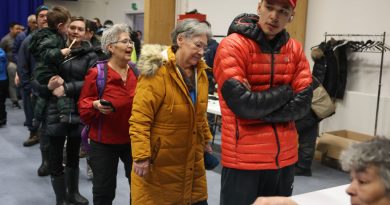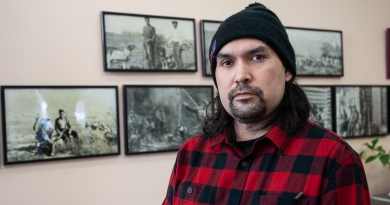Rebuild of N.W.T. climate research station ramps up
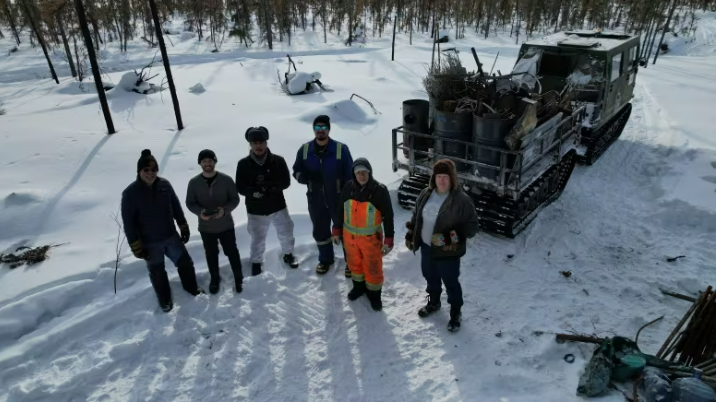
Efforts to rebuild a research station burned down in a late-season wildfire last year are coming together quickly, according to the director of lands and resources for the Łı́ı́dlı̨ı̨ Kų́ę́ First Nation (LKFN).
“It’s like a train going 1,000 miles an hour,” said Dieter Cazon, describing how things have been moving since the Scotty Creek Research Station was all but burned to the ground in mid-October.
The wildfire gutted five of nine buildings at the remote site 50 kilometers south of Fort Simpson, N.W.T., destroying research equipment, lab space, sleeping accommodations and solar arrays, LKFN said at the time.
William Quinton, who founded the station back in the 90s, now pegs the damage to be worth about $2 million.
Quinton, director of the Cold Regions Research Centre at Wilfrid Laurier University in Waterloo, Ont., formally handed LKFN the keys to Scotty Creek just months before the fire — making it one of the first Indigenous-led research stations in the world.
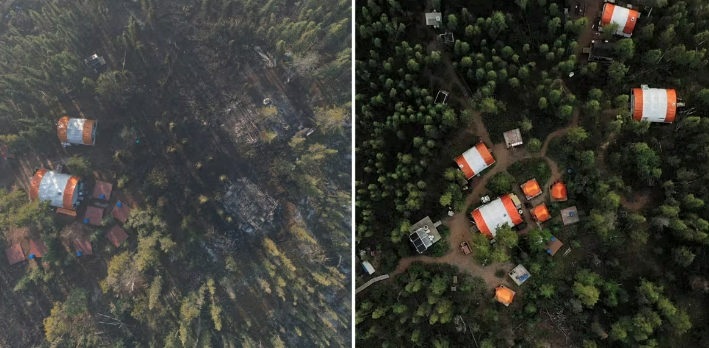
William Alger, an LKFN member who works at the research station as a guardian to help monitor and protect the area, was recently at the site helping to rebuild.
“It’s almost surreal in a way, seeing everything, how nature is trying to reclaim the damage from the forest fire,” he said.
Alger described the destruction as “a little daunting” but said “it’s also kind of invigorating to see what kind of changes are going to come to the camp now that LKFN has a more permanent hand in the process of rebuilding.”
The First Nation is in the process of rebuilding a one hectare plot at the station’s core. It’s where the sleeping accommodations, kitchen, labs, storage facilities, showers and toilets are located — and there’s water and electricity too.
The cleanup started shortly after the fire. Cazon said in November, a crew of workers collected garbage and metal into piles. A tracked vehicle called a Hagglund made its first trip to Scotty Creek this month — hauling new equipment in and carrying garbage out.
Cazon says May and June will be big construction months, with carpenters and electricians expected to travel to the remote site. He hopes the station will be ready for an opening in August. But, he said, Scotty Creek is going to stay closed to researchers all year.
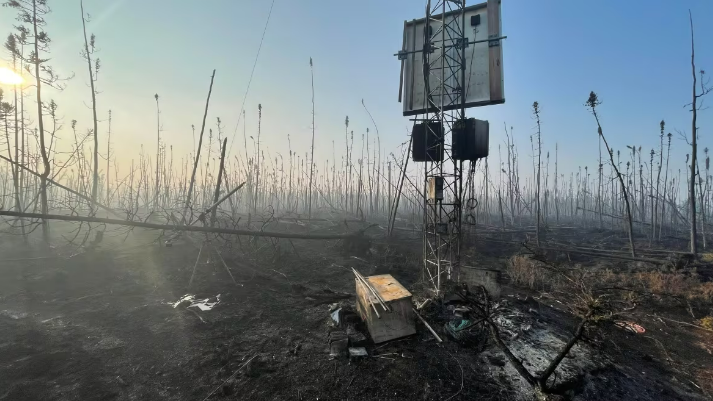
Carbon flux tower rebuild
Outside Scotty Creek’s core camp lies a 5-kilometer network of ground protection matting that leads to pieces of research infrastructure. Quinton said that equipment is up to universities and research centres to replace, in a process that he acknowledged is moving more slowly than LKFN’s central camp rebuild, in part because of insurance claims.
“I’m really pushing things along, trying to push things along here. You can only go so fast with the institution,” said Quinton.
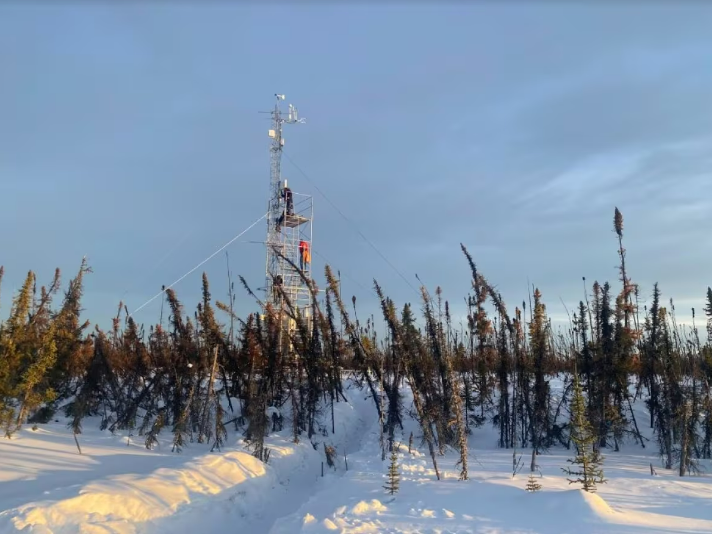
Although Scotty Creek will be closed to researchers this year, one group pitched their case and was able to travel to the site last week to repair a damaged carbon flux tower — one of two at the site.
Built in 2012 by Oliver Sonnentag, an associate professor at the University of Montreal, the towers are part of a network of others across North America that gather information about how greenhouse gasses flow from the ground to the atmosphere, and from the atmosphere back to the ground.
Sonnentag said he pushed hard to be able to repair the damaged tower as quickly as possible, because it can collect important information about what happens to carbon stored in wetlands and forests after there’s been a fire.
“It’s the first time we have that opportunity,” he said.
Researchers have looked at post-fire carbon flux before, he said, but the study didn’t happen until years after the fire because it takes time and money to set things up. In this case, he said, the equipment is in place already and there’s data from before the fire to compare new information to.
That is, if the repairs work.
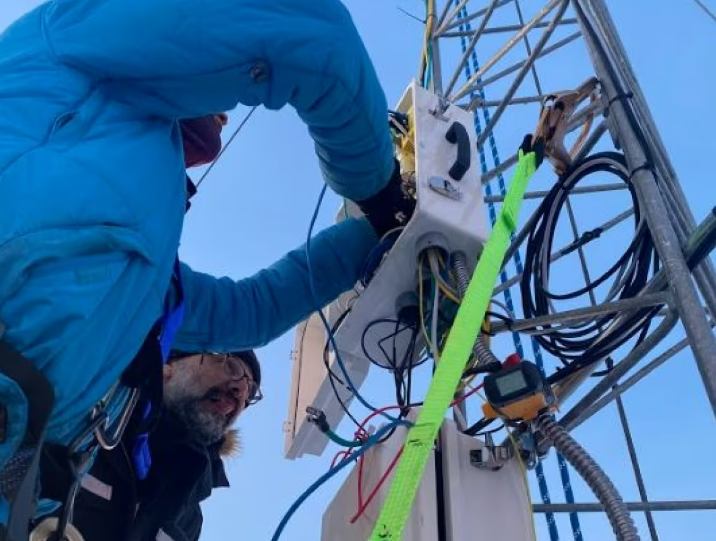
Sonnentag and his team have left the site now, and he said it’ll take a couple of days to figure out whether everything is functioning properly.
“Fingers crossed, I hope it works. But I don’t know. I mean, it looked great when we left.”
Cazon said LKFN recognized the importance of getting the tower working again, and allowed Sonnentag and his team access to the research station. He said one of the First Nation’s responsibilities is to make sure climate change research continues to happen at Scotty Creek so it can be shared with other communities and scientists.
Related stories from around the North:
Antarctica: South Pole warmed 3 times the global rate over the past 30 years, new study suggests, Thomson Reuters
Arctic: Latest projections show “enormous challenge” ahead in meeting climate targets says WMO, Eye on the Arctic
Canada: Indigenous leaders in northwestern Canada declare climate emergency, CBC News
Finland: Finland behind on sustainable development goals, Yle News
Greenland: COVID-19 delay, early ice melt challenge international Arctic science mission, The Associated Press
Iceland: Ice-free Arctic summers likely by 2050, even with climate action: study, Radio Canada International
Norway: Norway to expand network of electric car chargers across Arctic, The Independent Barents Observer
Russia: Record 38C temperature recorded in Arctic Siberia, Eye on the Arctic
Sweden: January temperatures about 10°C above normal in parts of northern Sweden, says weather service, Radio Sweden
United States: Temperatures nearing all-time records in Southcentral Alaska, Alaska Public Media

